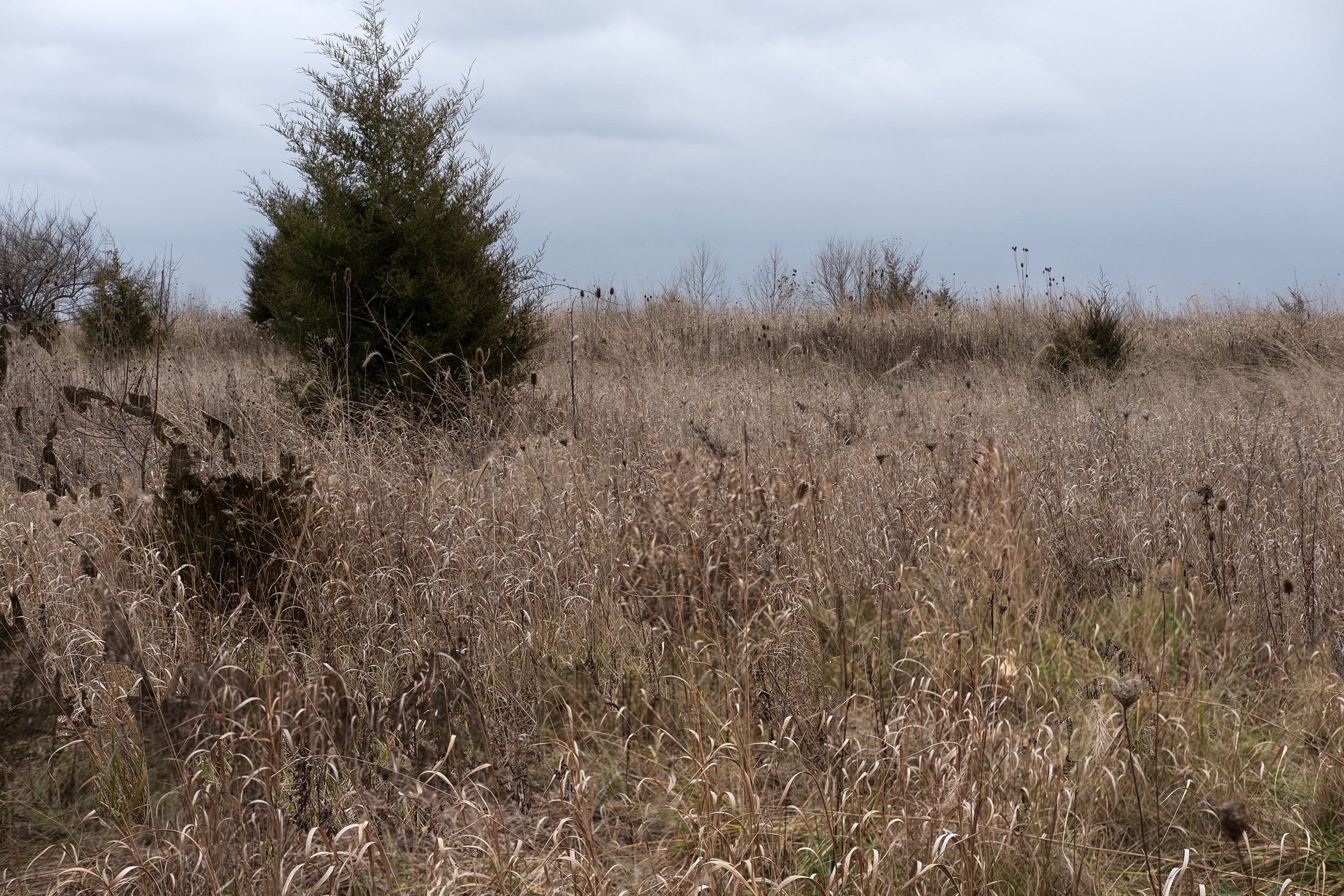Fernald Preserve: superfun(d)
Lizz Stringfield
Eighteen miles northwest of Cincinnati, in rural Ohio, sits the former site of a nuclear production facility known alternately over the years as the Feed Materials Production Center, Fernald Environmental Management Project, the Fernald Closure Project, or simply, Fernald.
Between 1951 and 1989, the 1,050-acre facility operated by the U.S. Department of Energy produced high-purity uranium metals products for the government’s defense program, spurred by the Cold War. Four concrete silos were constructed to store radioactive materials, two of which were known as the K-65 silos and contained high radium-bearing residues. Another contained lower-level dried uraniam residues, and one was never used.
Three years before the plant closed, the DOE and the U.S. Environmental Protection Agency launched a joint study to address the environmental impacts associated with the facility, finding that operations had perilously contaminated the soil, groundwater, and surface water with radionuclides like uranium, thorium, and radium.
Lizz Stringfield, a Cincinnati-based artist whose work focuses on human and environmental interactions, became fascinated by the history of the facility and its transformation over four decades into a preserve and green space. “With the help of regulators, Fernald Residents for Environmental Safety and Health (FRESH) chose to turn the 1050-acre site into a nature preserve,” Stringfield says. “It took 3,000 workers and $4.4 billion to clean up the site.”
Stringfield is interested in the ways that a humans-dominate-nature narrative can instead transition to an integrated approach in which people consciously consider themselves a part of nature and the world around us. She manipulates “readable information” through digital collage, conceptual drawing, and lighting, creating enigmatic photographs that exist between familiarity and the unknown.
By the time the site opened as a nature preserve, 4.7 million tons of low-level radioactive waste was permanently contained at Fernald in a 65-foot-high grass-covered mound, while 1.3 million tons of waste moved to storage sites in Texas, Nevada, and Arizona.
Numerous community-led advocacy groups and committees were instrumental in the project, such as the Fernald Citizens Advisory Board, which produced reports on cleanup levels and provided recommendations for future use and waste disposal.
“An estimated 31 million pounds of uranium products, 2.5 billion pounds of waste, 255 buildings and structures, and 2.75 million cubic yards of contaminated soil and debris were identified as requiring remedial action,” says an EPA report, which also adds that a 223-acre portion of the Great Miami Aquifer, which underlies the site, was contaminated “above radiological drinking water standards.”
From 1991 to 2006, DOE completed a $4.4 billion cleanup with EPA and Ohio EPA oversight. Fernald Preserve opened to the public in 2008, concluding one of the largest and most comprehensive clean-ups in U.S. history.
Stringfield’s ongoing series Fernald Preserve: Superfun(d) begins with photographs of the preserve itself, which are then digitally manipulated and distorted. “In some of the photographs from this series, the plant life is repeated in complex patterns,” Stringfied says. She continues:
I see this as the determination and resilience of nature. These repeated patterns also mirror my fears of history repeating itself. That’s why there are always passages breaking out—the patterns are always disrupted. We continue to grow in our ability to work with and learn from our ecosystem, even though the process can feel clunky and slow-moving.
Stringfield incorporates a red-and-white checkered pattern in some of her collages, evocative of the vector pattern of digitally altered images that also references a red-and-white checkered water tower that once stood on the Fernald site. “It was colloquially misunderstood as a Purina pet food company, which also had a red-and-white checkered logo,” the artist says. The water tower is a striking emblem of the disastrous consequences of the Feed Materials Production Center dumping radioactive waste into pits merely 20 yards away from a creek, which in turn sits on top of a 1.5 trillion-gallon aquifer. When the pits were filled up or began to leak, rainwater carried uranium directly into the water, affecting 225 acres.
The artist is interested in a program of securing conservation easements, headed up by the Paddys Run Conservation Project, which was founded in 2010. As partial compensation for damages to the aquifer, Ohio received $13.7 million, a portion of which PRCP is using to purchase easements. The group has already protected more than 4,800 acres of riparian corridors, farmlands, and forest. This summer, she plans to photograph more of these closely monitored sites in addition to revisiting Fernald.
Find more:
lizzstringfield.com @lizz_stringfield




